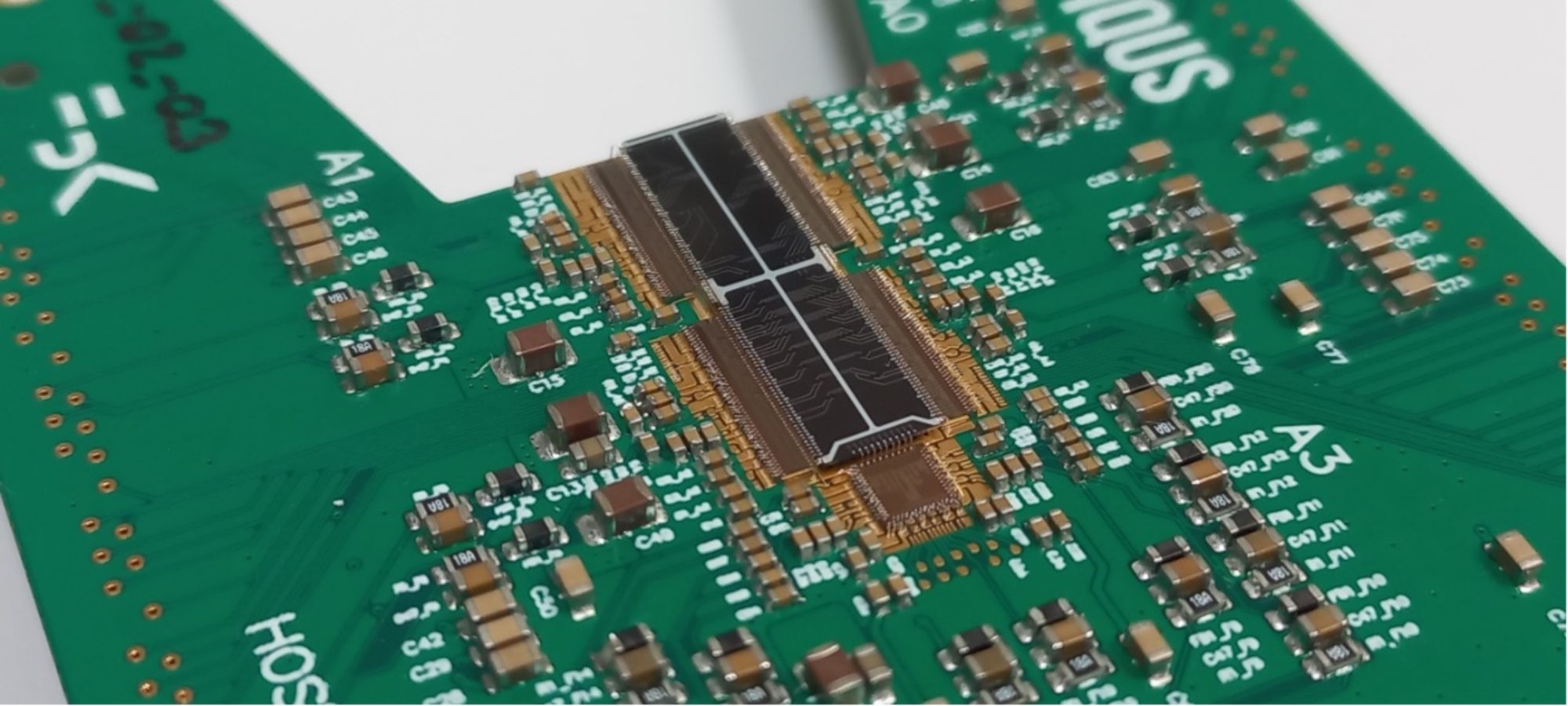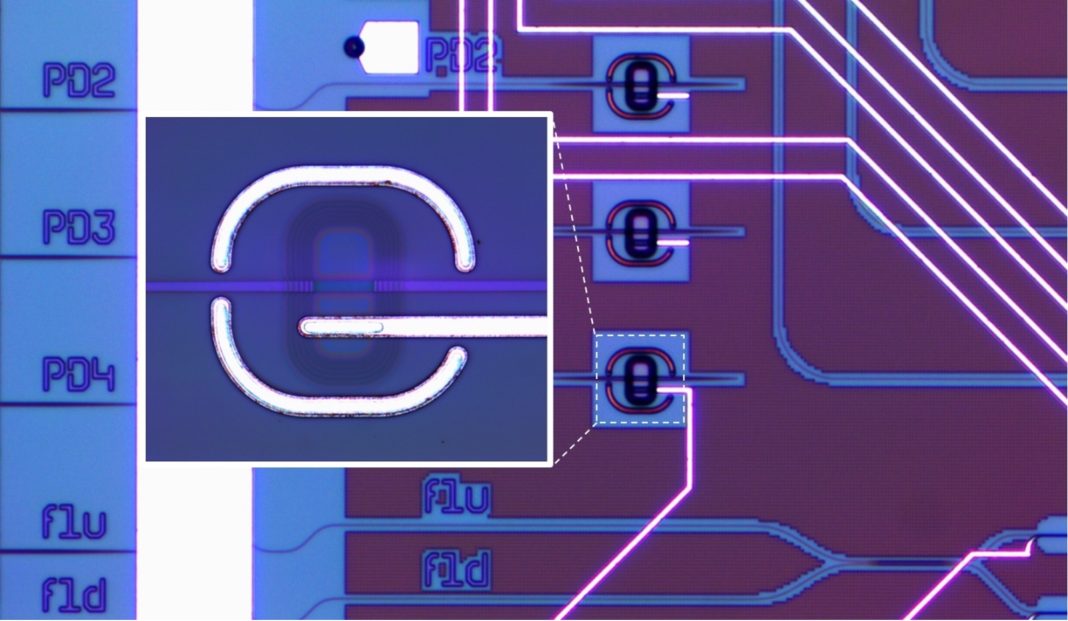Mher Ghulinyan, Senior researcher at the Fondazione Bruno Kessler’s Centre for Sensors and Devices, tells us about the EPIQUS project and the creation of a cost-effective, user-friendly, and high-performance quantum simulator based on full integration of silicon nitride photonics with silicon electronics
A cornerstone for the future of experimentation, simulators allow real-world scenarios and conditions to be explored without the associated risks, costs, or time restrictions imposed by the real world. From transport to medicine, agriculture to finance, many sectors use simulators to approximate, predict and model real-world scenarios to test ideas, gather information, and refine operations. Integrating the nature and behaviour of matter and energy on atomic and subatomic scales creates a more authentic virtual world in which simulations can run following the rules of quantum mechanics to model new smart materials, predict chemical reactions, or solve high-energy physics problems. However, the ways to access quantum behaviours are often hampered by the need for complex conditions and costly solutions. The EPIQUS project, funded by the EU Horizon 2020 – Future Emerging Technologies initiative, is creating a lab-accessible and affordable quantum simulator (QS) operable at room temperature. Such a quantum simulator has the potential to provide many advantages, including supporting rapid and widespread innovation.

The approach
EPIQUS has designed and is building an affordable, easy-to-use, reliable QS prototype. The project’s vision to create a QS is being achieved by combining mature silicon microelectronic and silicon nitride quantum micro-photonic functions onto a unique semiconductor platform to produce a breakthrough device.
3D-integrated QS hardware is being developed, involving a reconfigurable photonic quantum interference circuit monolithically integrated onto a silicon chip with scalable arrays of single photon avalanche detectors (silicon SPADs) operable at ~800nm wavelength at room temperature (Figure 1). The reconfigurability of the quantum optical architecture is provided by tiny micro-heaters, which allow hundreds of optical phase-shifting elements to be set within a 1cm2 area chip: this allows the flow of single-photons – the qubits – to be directed along different paths, creating sequences of quantum logic gates, the equivalents of transistors in an integrated electronic circuit.
In parallel, a customised software set of quantum algorithms that can sustain the quantum simulation hardware results is being built. Through this, the quantum hardware can be accessed via an HTML interface where users can set the desired problem to be run on the QS. Combined, an electronic chip will drive the QS module to actively control the quantum optical circuit and collect the output data, which will be used to further feed and refine the software algorithm.
The motivation and anticipated impact
It is anticipated that the EPIQUS QS will open the door to future developments in miniaturized and more complex quantum photonic integrated circuits and on-chip detectors of quantum states of light. So far, the research has earned the team several high-profile publications, including articles in Nature Physics, Nature Communications, and Optica.
As for the impact of the technology’s application, it will enable new ideas and quantum functionalities to be tested on a single silicon chip, run remotely by a user from a PC. For industries that use simulations to inform their decision-making processes, the ultimate goal is to be able to use quantum simulators to access more accurate, real-world scenarios that produce better-quality information. Similarly, future scientific experiments to understand processes, such as chemical reactions, the properties of new materials, or biological systems, could be run by a quantum simulator to predict reaction pathways and results.

What’s next…
As the end of the project approaches, the achievements of EPIQUS are coming to light, and the team is keen to progress the activity further. The next step is to understand the types of problems the chips can be used to solve; the team has started testing ideas using simulations and then scaling down the successful ones, transforming the network into a dense, integrated circuit on a single chip, which is then characterised. There is a lot of work to do to explore the range of applications these chips can be used for, and the work has only just begun! The team plans to build on the success of the project by creating, experimenting, and characterising the chips, as well as working on the system software to improve its performance.
Most excitingly, the chips provide a means to explore new ideas in quantum science. This novel and promising approach offers the chance for a ground-breaking, mass-manufacturable technology.
About the team
The EPIQUS project team possesses a diverse range of expertise, from a wealth of engineering specialisations in material, device, photonic and electronic circuit engineering to microfabrication technology, quantum optics, and information technologies. Together, the partners’ capabilities mean they are able to design, build, trial, and refine the QS prototype.
References for further reading
-
- M. Bernard, F. Acerbi, G. Paternoster, G. Piccoli, L. Gemma, D. Brunelli, A. Gola, G. Pucker, L. Pancheri, and M. Ghulinyan. Top-down convergence of near-infrared photonics with silicon substrate- integrated electronics. Optica 8, 1363-1364 (2021). https://doi.org/10.1364/OPTICA.441496
- M Sanna, A Baldazzi, G Piccoli, S Azzini, M Ghulinyan, L Pavesi. SiN integrated photonic components in the Visible to Near-Infrared spectral region. Optics Express 32 (6), 9081-9094 (2024). https://doi.org/10.1364/OE.514505 (selected for Spotlight in Optics)
- F. Acerbi, M. Bernard, B. Goll, A. Gola, H. Zimmermann, G. Pucker, and M. Ghulinyan. Monolithically Integrated SiON Photonic Circuit and Silicon Single-Photon Detectors for NIR-Range Operation. J. Lightwave Technol. 42, 2831-2841 (2024). https://doi.org/10.1109/JLT.2023.3342031
- G Piccoli, M Sanna, M Borghi, L Pavesi, M Ghulinyan. Silicon oxynitride platform for linear and nonlinear photonics at NIR wavelengths. Optical Materials Express 12(9), 3551-3562 (2022). https://doi.org/10.1364/OME.463940
- Neef, V., Pinske, J., Klauck, F., Teuber, L., Kremer, M., Ehrhardt, M., Heinrich, M., Scheel, S. and Szameit, A. Three-dimensional non-Abelian quantum holonomy. Nature Physics,19(1), pp.30-34 (2023). https://doi.org/10.1038/s41567-022-01807-5
- Schiansky, P., Kalb, J., Sztatecsny, E., Roehsner, M.C., Guggemos, T., Trenti, A., Bozzio, M. and Walther, P. Demonstration of quantum-digital payments. Nature Communications 14, p. 3849 (2023). https://doi.org/10.1038/s41467-023-39519-w

This work is licensed under Creative Commons Attribution-NonCommercial-NoDerivatives 4.0 International.


